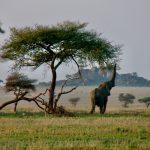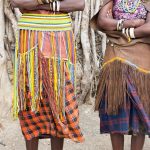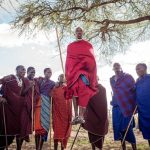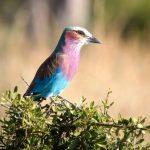Great Wildebeest Migration Update: Calving Season February 2024
The Great Wildebeest Migration is undoubtedly one of the greatest natural spectacles on the planet – where two million wildebeest migrate around The Serengeti National Park in search of fresh pastures.
Managing Director Ted checked on the herds at the beginning of February when he went out to see our favourite camps in the Southern areas of the Serengeti. We like to make frequent trips to ensure everything is still up to the Odyssey standard, as well as scouting for exciting new projects.
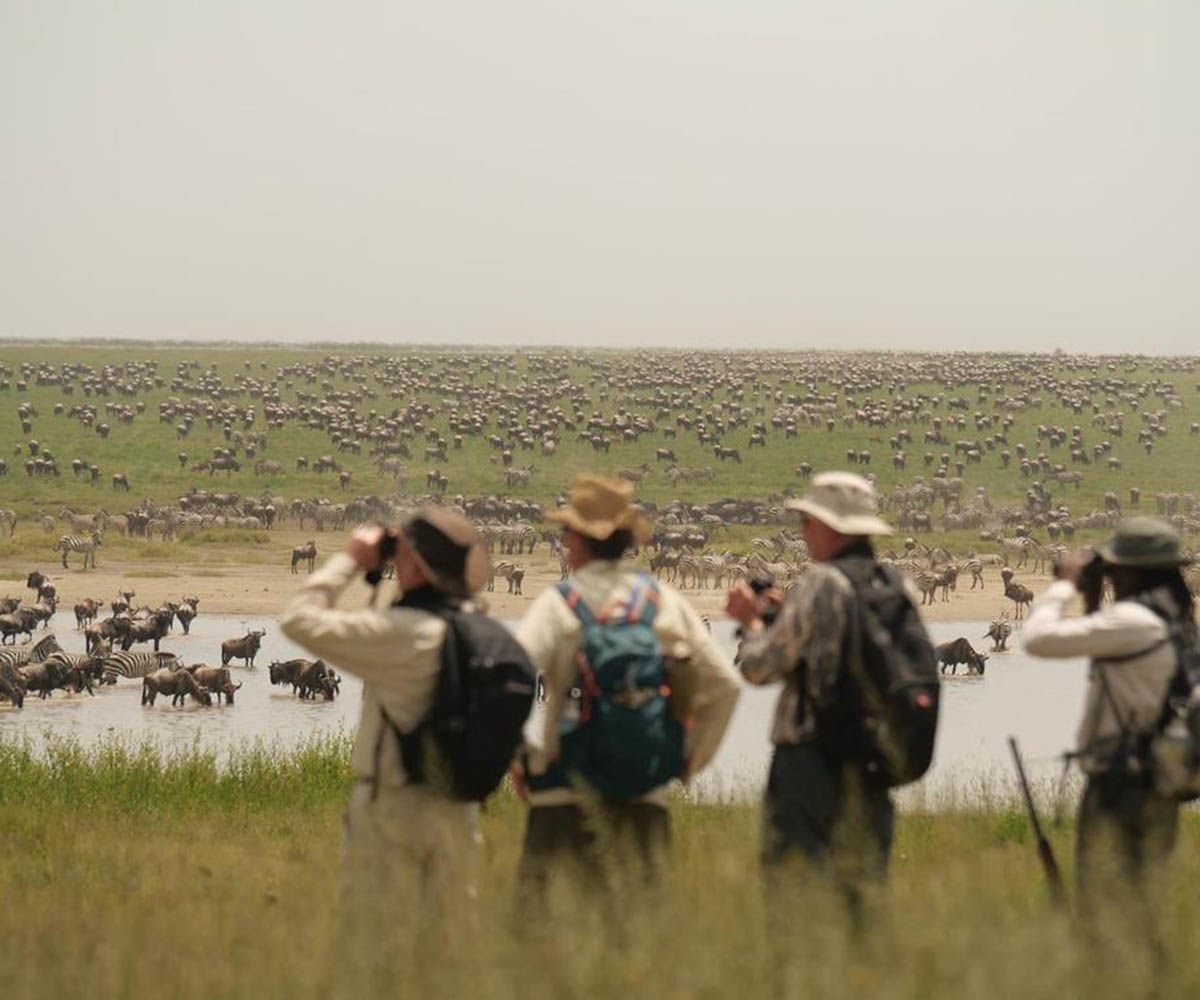
Walking in the Serengeti
© Wayo
Ted found the herds were where they should be at this time of year: mostly in the Ndutu Plains area. Some were making their way up the southwest region of Kusini, with a few beginning to work their way through the Maswa Reserve. And of course, the beginning of the calving season!
Like clockwork, the wildebeest give birth throughout February every year without fail, welcoming hundreds of thousands of calves into the world (some 8,000 are born per day). Take a drive around and you are likely to see this in action. So evolved as they are to the surrounding dangers of the wild, just minutes after the calves are born they can be seen galloping alongside their mothers.
That’s just as well: new, vulnerable life doesn’t go unnoticed by predators, as they prowl the area looking for an easy meal. At this time of year, the southern Serengeti sees the highest concentration of predators on the planet. That’s something to get up at 5 am for!
Thousand by thousand, the herds have amassed on the grassy plains and we couldn’t recommend a hot air balloon over the wildebeest-filled plains enough.
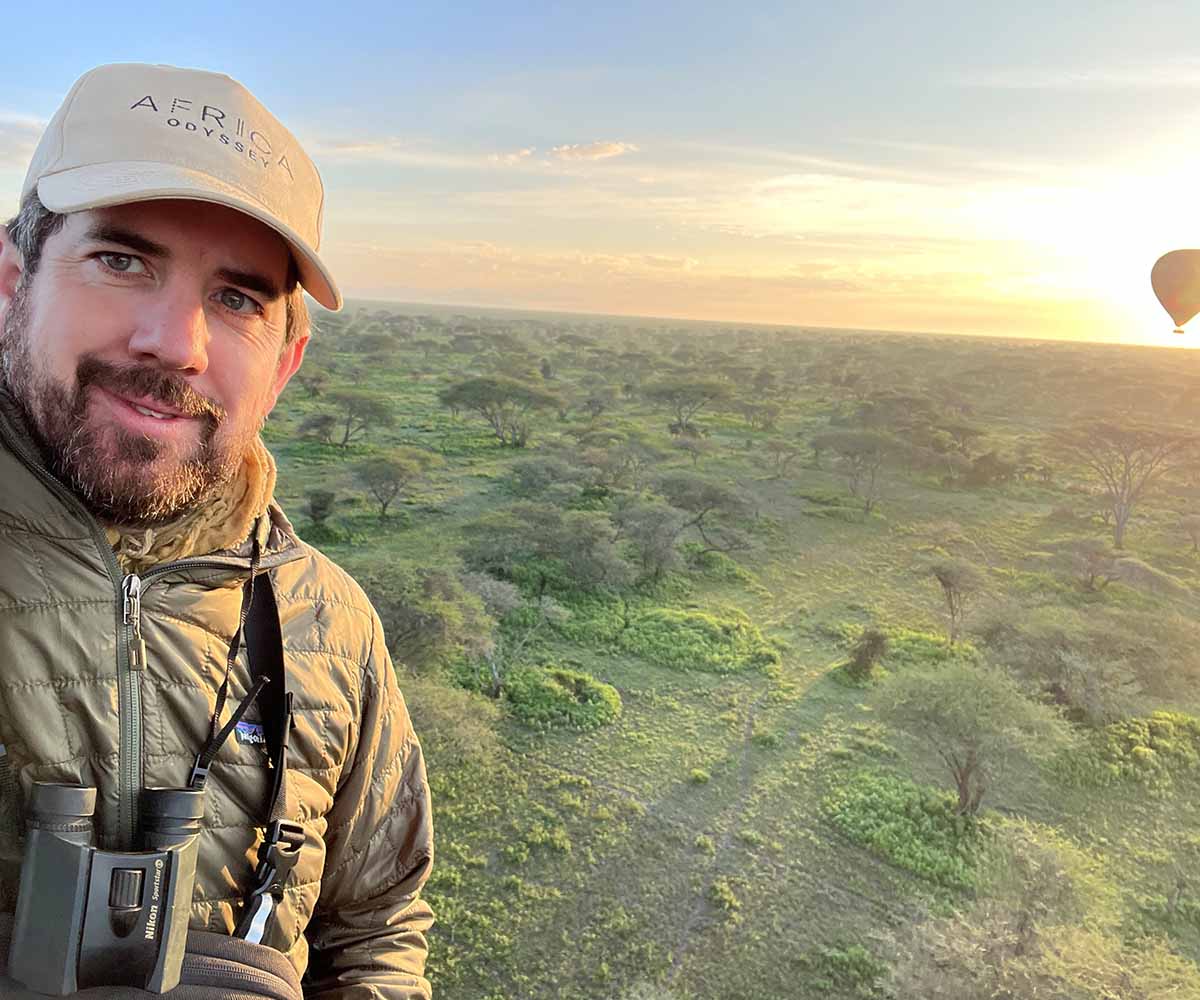
But just as quickly as it began, within a few weeks, the calving season comes to an end. From the Southern Plains, the herds will splinter off following the rain patterns that drive this annual migration.
In February the best places to stay are the mobile camps which up sticks and move two or three times throughout the year to be best placed for the Migration. Don’t be fooled though – these are by no means camping as you’re used to – ranging from no-frills camps to the extreme ends of the highest luxury. Brass basins, plumbed showers, and exceptional food all await.

Ubuntu Migration Camp
© Asilia
Whilst many documentaries boast Kenya’s Masai Mara to be the place to witness the migration, don’t make this mistake! The migration is in the Serengeti all year long and it’s only in July when a tiny fraction of the wildebeest enter the Mara can you see some of these herds.
If you’re unsure about the best times to see the migration or aren’t sure where the migration will be during a certain month, contact one of our specialists who will be more than happy to chat through any questions you may have.

